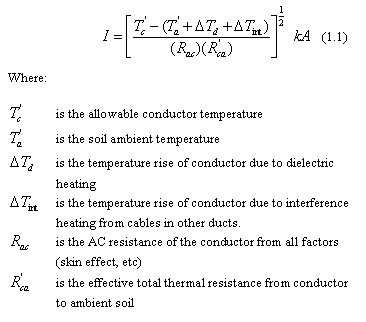Ground Rules by John Cadick: Power System Studies (Part 2 of 3)
 By John Cadick, P.E., Cadick Corporation
By John Cadick, P.E., Cadick Corporation
Last week I discussed short circuit analysis, protective device coordination, and load flow. While these three studies are certainly the most common studies defined in ANSI/IEEE standard Std 399, they are only the tip of the iceberg. Std 399 defines eight other studies including the four that we will cover this week – cable ampacity, stability, motor starting, and transient switching. Note that all of these studies require the same basic system model with additional information for the specific needs of the study.
Cable Ampacity
Most modern engineering projects determine cable size by using the tables and methods that are laid out in the National Electrical Code. The use of more rigorous methods will provide more conservative engineering results and better long term performance of the power system.
Std 399 identifies four key factors to be considered in the design and calculation of cable ampacity:
- Ambient temperature
- Thermal characteristics of the surrounding medium
- Heat generated by the conductor during current flow
- Heat generated by adjacent conductors

The results of such a study will allow the system owner to properly schedule load growth and identify areas that need new or upgraded cable installations.
Stability
Stability is defined as the ability of a power system to continue operating after it has been subjected to a change. The criteria of continued operation is determined primarily by the ability of synchronous generators to stay on line and in synchronism. Modern stability studies consider both steady state and transient stability. Steady state stability involves long-term or relatively slow load changes. Transient stability includes those events that are short term in nature such as lightning strikes and/or short circuits.
A stability study is very computer intensive and requires accurate, dynamic modeling of the rotating equipment on the power system. This modeling includes not only the mechanical systems, but also the control and excitation systems. The various steady state and transient events can be modeled during the study to ensure that the system will continue operating for all likely conditions.
The results of a stability study can be used for a variety of purposes including:
- Setting of protective device operating points.
- Determining automatic reclosing times.
- Calculating load-shedding operating times.
- Identify maximum load changes
Motor Starting
All electric power system operators are familiar with the effects of starting a large motor. The high current drawn by the motor causes a substantial voltage drop throughout the system. This voltage drop can cause voltage sensitive coils to drop out or can even cause the motor to stall before it comes up to speed.
Fortunately, a computerized motor starting study can be used to model the system and calculate the voltage profiles during the start. If the motor and load mechanical inertias are known, they motor starting data can be calculated. Most modern computer programs will plot the time curves for such variables as motor current, torque, voltage drop, and others.
Anytime new motors are being contemplated, the system model can be modified and the starting conditions evaluated. Such a study can identify the need for increased transformer size, starting capacitors, larger cable, or reduced voltage, starting systems.
Transient Switching
The switching transient study is used to calculated voltage surges, spikes, and oscillations that may occur during operation of circuit breakers, switches, capacitor banks, arc furnaces, and other such equipment that may introduce such objectionable voltages. The study may also include the analysis of lightning arrestor operation, ferroresonance, virtual current chopping, and circuit breaker transient recovery voltage.
These types of studies should be performed periodically to insure that the transient voltages will not exceed system insulation ratings causing flashovers, failures, or protective device operations.
A registered professional engineer, John Cadick has specialized for three decades in electrical engineering, training, and management. In 1986 he created Cadick Professional Services (forerunner to the present-day Cadick Corporation), a consulting firm in Garland, Texas. His firm specializes in electrical engineering and training, working extensively in the areas of power system design and engineering studies, condition based maintenance programs, and electrical safety. Prior to the creation of Cadick Corporation, John held a number of technical and managerial positions with electric utilities, electrical testing firms, and consulting firms. Mr. Cadick is a widely published author of numerous articles and technical papers. He is the author of the Electrical Safety Handbook as well as Cables and Wiring. His expertise in electrical engineering as well as electrical maintenance and testing coupled with his extensive experience in the electrical power industry makes Mr. Cadick a highly respected and sought after consultant in the industry. (Back to top)
